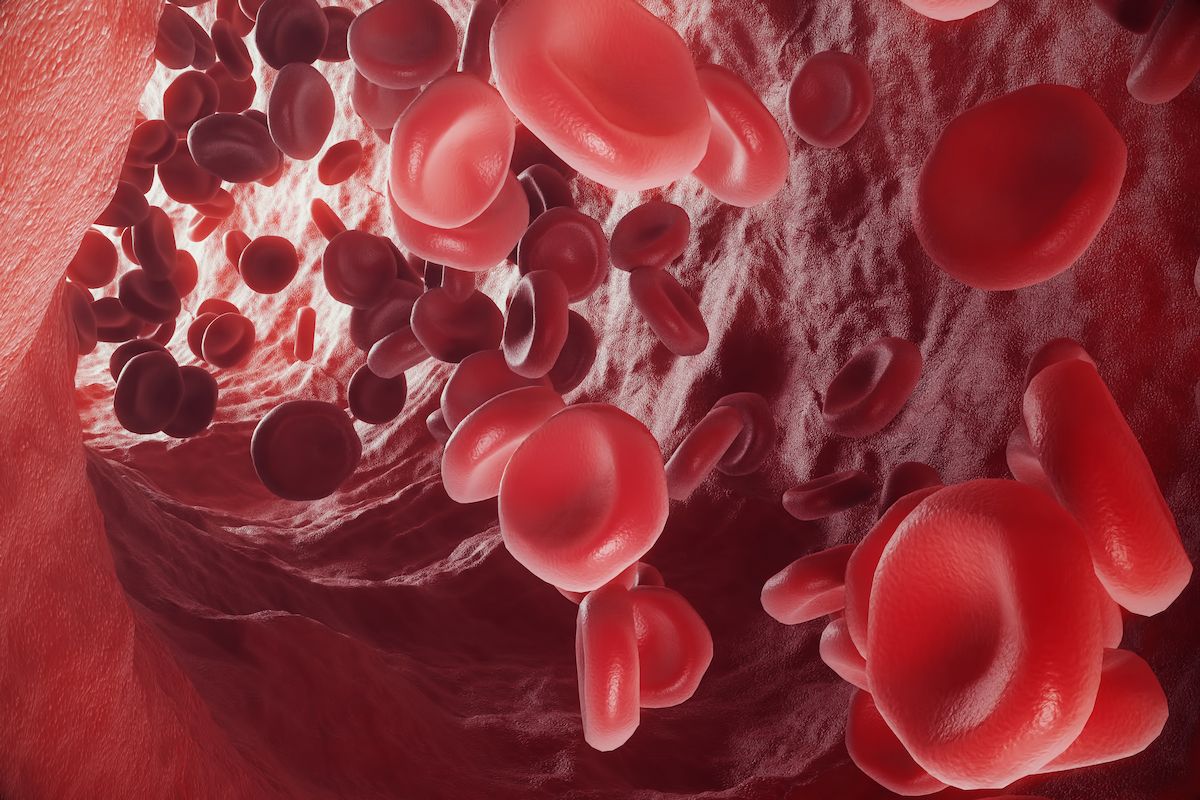Belantamab Mafodotin Combos Accepted for Review by FDA in Multiple Myeloma
A BLA has been accepted by the FDA for 2 belantamab mafodotin combinations that have shown positive results in patients with multiple myeloma.
A BLA has been accepted by the FDA for 2 belantamab mafodotin combinations that have shown positive results in patients with multiple myeloma.

The FDA has accepted for review a biologics license application (BLA) for 2 regimens involving belantamab mafodotin-blmf (Blenrep), one with bortezomib (Velcade) plus dexamethasone (BVd) and the other with pomalidomide (Pomalyst) plus dexamethasone (BPd), as a second-line or later treatment for patients with relapsed or refractory multiple myeloma, according to a press release from the developer, GSK.1
For belantamab mafodotin, this is the sixth major regulatory filing of 2024. A Prescription Drug User Fee Act date of July 23, 2025, has been chosen by the FDA.
The decision follows positive results from the phase 3 DREAMM-7 trial (NCT04246047), which tested belantamab mafodotin with bortezomib and dexamethasone, and the phase 3 DREAMM-8 trial (NCT04484623), which tested belantamab mafodotin with pomalidomide and dexamethasone.
“Relapsed/refractory multiple myeloma treatment could be transformed by additional efficacious treatment options with manageable [adverse] effects and community-based administration,” Hesham Abdullah, senior vice president and global head of Oncology Research and Development at GSK, said in a press release.1 “The evidence from DREAMM-7 and DREAMM-8 supporting our [belantamab mafodotin] combinations submission has been further strengthened by the statistically significant overall survival results [OS] from the DREAMM-7 trial.”
Both the DREAMM-7 trial and the DREAMM-8 trial met their primary end points of progression-free survival (PFS) in comparison with standard-of-care (SOC) triplet combinations.
DREAMM-7
In the DREAMM-7 trial, the median PFS for the BVd arm was 36.6 months (95% CI, 28.4-not reached [NR]) compared with 13.4 months (95% CI, 11.1-17.5) in the SOC treatment arm (HR, 0.41; 95% CI, 0.31-0.53; P <.00001).2 PFS rates were 69% and 43% in each arm, respectively, at 18 months.
Additionally, a subsequent, planned interim analysis of the DREAMM-7 trial found that belantamab mafodotin with bortezomib and dexamethasone reached the key secondary endpoint of OS.3 Further details on this end point will be presented at the 2024 ASH Annual Meeting and Exposition.
Patients were randomly assigned, in a 1:1 ratio, to one of 2 trial arms. Dosing for the belantamab mafodotin group was 2.5 mg/kg intravenously every 3 weeks with 1.3 mg/m2 of subcutaneous bortezomib on days 1, 4, 8, and 11 with 20 mg of dexamethasone on the day of and after bortezomib. For every cycle after the eighth, patients received 2.5 mg/kg of belantamab intravenously ever 3 weeks.
In descending order, most patients in the bortezomib arm had received 1 prior line of treatment (51%), then 2 or 3 (36%), then 4 or more (12%). Prior bortezomib had been given to 86% of patients, and 33% of patients were refractory to lenalidomide (Revlimid).
Regarding safety in the DREAMM-7 trial, grade 3 or 4 adverse effects (AEs) occurred in 95% of patients in the BVd arm, and treatment discontinuation and dose reduction due to AEs occurred to 31% and 75% of patients in the BVd arm, respectively. Fatal serious AEs occurred in 10% of patients in the BVd arm.
DREAMM-8
In the DREAMM-8 trial, the median PFS was NR (95% CI, 20.6-NR) in the BPd arm compared with 12.7 months (95% CI, 9.1-19.5) in the SOC treatment arm (HR, 0.52; 95% CI, 0.37-0.73; P <.001).4 PFS rates were 71% and 51% in each arm, respectively, at 12 months.
Patients were randomly assigned to one of 2 trial arms. Dosing for the belantamab mafodotin group was 2.5 mg/kg of belantamab intravenously for cycle 1 then 1.9 mg/kg every 4 weeks, 4 mg of pomalidomide taken orally on days 1 to 21, and 40 mg of dexamethasone on days 1, 8, 15, and 22.
In the DREAMM-8 trial, grade 3 or 4 toxicity was experienced by 91% of patients, and treatment discontinuation and dose reduction due to AEs occurred in 15% and 61% of patients in the BPd arm. Fatal serious AEs occurred in 11% of patients in the BPd arm.
References
- Blenrep combinations accepted for review by the US FDA for the treatment of relapsed/refractory multiple myeloma. News release. GSK. November 25, 2024. Accessed November 25, 2024. https://tinyurl.com/4wjtdf3t
- Mateos MV, Robak P, Hus M, et al. Results from the randomized phase III DREAMM-7 study of belantamab mafodotin (belamaf) + bortezomib, and dexamethasone (BVd) vs daratumumab, bortezomib, and dexamethasone (DVd) in relapsed/refractory multiple myeloma (RRMM). J Clin Oncol. 2024;42(suppl 36):439572. doi:10.1200/JCO.2024.42.36_suppl.439572
- Blenrep shows overall survival benefit in head-to-head DREAMM-7 phase III trial for relapsed/refractory multiple myeloma. News release. GSK. November 14, 2024. Accessed November 25, 2024. https://tinyurl.com/4zpxuk3m
- Trudel S, Beksac M, Pour L, et al. Results from the randomized phase 3 DREAMM-8 study of belantamab mafodotin plus pomalidomide and dexamethasone (BPd) vs pomalidomide plus bortezomib and dexamethasone (PVd) in relapsed/refractory multiple myeloma (RRMM). J Clin Oncol. 2024;42(suppl 17):LBA105. doi:10.1200/JCO.2024.42.17_suppl.LBA105
Navigating AE Management for Cellular Therapy Across Hematologic Cancers
A panel of clinical pharmacists discussed strategies for mitigating toxicities across different multiple myeloma, lymphoma, and leukemia populations.